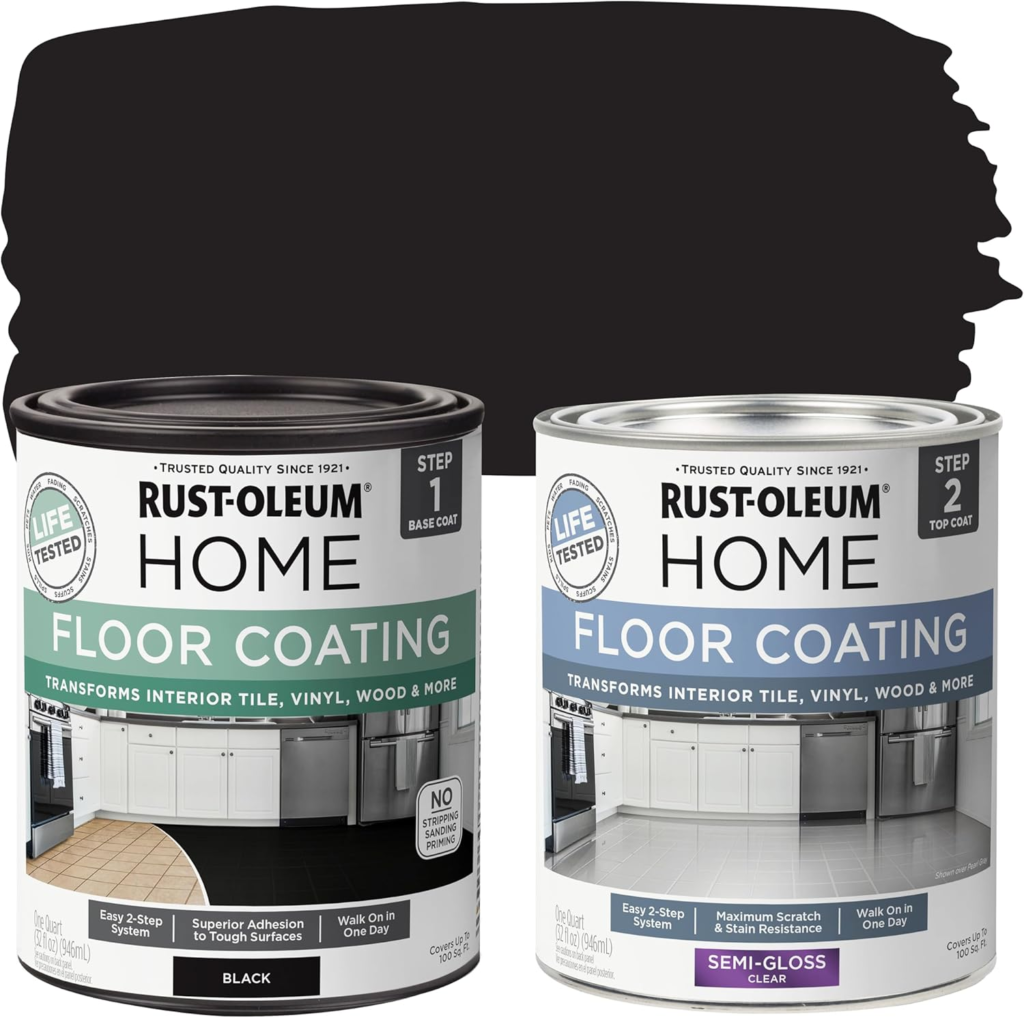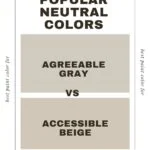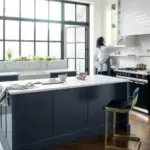Introduction
When it comes to refreshing the look of your home, few options are as effective and transformative as a fresh coat of paint. However, once you decide to repaint your space, a pressing question emerges: Is it more cost-effective to tackle the job yourself or to hire a professional? This article delves into the intricate details of both DIY painting and professional services to help you make an informed decision that aligns with your budget and expectations.
Overview of the Cost Dilemma
The decision to paint your home yourself or hire a professional can be bewildering. Both routes come with their own sets of costs and benefits. On the surface, DIY painting might seem cheaper, but the real expenses can be more nuanced. Conversely, hiring a professional appears costly upfront, yet it can offer hidden savings and superior outcomes.
Importance of Understanding Both DIY and Professional Options
Understanding the financial and logistical implications of both DIY and professional painting is essential for homeowners. From the quality of finishes to the robustness of materials and even personal health risks, several variables play a crucial role in determining the true cost and value of your decision.
DIY Painting: A Cost Breakdown
Initial Costs
The initial costs of a DIY painting project are more than just buying a can of paint. Let’s break down the primary expenses you will encounter.
Tools and Equipment
Brushes, Rollers, Trays, and Ladders
When painting your home, you’ll need an assortment of brushes, rollers, trays, and possibly even ladders. High-quality tools are crucial for a smooth, professional-looking finish. However, they add to the initial costs.

Pro Grade Paint Roller Kit, Brush & Roller for Professionals & Homeowners
Perfect for smooth finishes on your interior walls. Ideal for home improvement enthusiasts!
Buy Now on AmazonPaint, Primer, and Other Materials
Besides the tools, you’ll need to invest in paint, primer, tapes, and possibly a sprayer if you’re tackling a large area. The upfront cost for these materials can be substantial, especially if you opt for higher-quality products.
Paint Selection
Cost Differences in Quality
Paint varies significantly in terms of price and quality. Premium brands often provide better coverage and longevity but come at a higher price. Opting for cheaper paint can lead to more frequent touch-ups and repaints, impacting long-term costs.
How Much Paint is Needed?
Calculating the amount of paint required for your project is critical. Over-purchasing can lead to waste, while under-purchasing could mean added trips to the store, hampering productivity.
Preparation Costs
Sandpaper, Tape, Drop Cloths
Surface preparation is the cornerstone of a successful paint job. Sandpaper, painter’s tape, and drop cloths are essential for prepping the space but contribute to the initial expense.

Rust-Oleum 367605 Home Interior Floor Coating Kit, Semi-Gloss Black
Ideal for updating outdated flooring at a fraction of the cost of replacement and adheres without stripping, sanding or priming.
Buy Now on AmazonWall Repairs and Cleaning Supplies
Uneven walls, holes, and dirt can ruin a fresh coat of paint. Investing in spackling paste, cleaning solutions, and other repair materials ensures that the walls are in optimal condition before painting begins.
Labor Costs for DIY
Time Investment
DIY painting demands a significant time commitment. Prepping, painting, and cleaning up can take days or even weeks, depending on the scope of the project. This time could be spent on other productive activities, raising the concept of opportunity cost.
Opportunity Costs
Your time is valuable. When considering a DIY project, think about the opportunity cost: the value of time spent painting versus other activities like work, family, or leisure. This lost time can be substantial.
Hidden Costs of DIY
Mistakes and Rework
Errors in painting can be costly. Poor brush techniques, imperfect tape lines, or uneven coats often necessitate redoing parts of the work, leading to wasted paint and time.
The Expense of Fixing Errors
Simple mistakes can escalate into significant expenses if not handled correctly. Paint waste and additional trips to the hardware store can affect your initial cost savings.
Potential Health Risks
Improper Handling of Paint Fumes
Paint fumes can be harmful if not handled correctly. Adequate ventilation and suitable masks are essential to mitigate health risks, adding another layer to your expenses.
Safety Equipment Costs (Masks, Gloves)
Masks, gloves, and even protective glasses are vital for safety when painting. These might seem like minor costs, but they quickly add up, especially for larger projects.
Hiring a Professional: What’s Included in the Price?
Professional Fees Breakdown
Labor and Expertise
Professional painting services come with a higher upfront cost due to labor charges. However, this fee includes expertise and experience, ensuring high-quality finishes and efficient work.
What’s Included in a Pro’s Estimate?
A professional quote often includes labor, materials, and sometimes even minor wall repairs. It’s crucial to understand what is covered to avoid unexpected expenses.
Value of Expertise and Experience
Professionals bring precision and skill honed over years. This expertise often means fewer mistakes, better preparation, and a result that can be significantly more durable than a DIY job.
Cost of Materials
Are Materials Provided by the Pro?
Many professional painters include the cost of materials in their rate. This not only saves you from making multiple trips to the store but also guarantees that the materials used are of professional grade.
Understanding Material Markup
Professionals might markup material costs as part of their service. While this can increase the overall cost, it often means they’re using higher-quality materials, ensuring longevity and better aesthetics.
Benefits of Hiring a Professional
Time-Saving Convenience
Faster Project Completion
Professionals can complete painting projects far quicker than the average homeowner. Their proficiency and efficiency mean you can enjoy your newly painted space sooner.
No Need for Your Own Time Investment
Handing the job over to pros frees up your schedule, allowing you to focus on other important aspects of life without the time commitment DIY painting requires.
Professional Results
Higher Quality Finish
The quality of a professionally painted wall is often superior. Professionals have the tools and techniques to achieve smooth, even coats with clean lines, providing a result that enhances your home’s aesthetic appeal.
Avoiding the Hassle of Touch-Ups and Fixes
Even the most meticulous DIY painters often encounter areas that need touch-ups. Professionals are adept at avoiding these pitfalls, resulting in less need for future fixes.
Common Extra Costs in Hiring a Pro
Unforeseen Repairs
Painters may uncover issues such as mold or structural damage that need addressing before they can continue. These repairs can increase the overall project cost but are often necessary for a quality finish.
Cost of Addressing Underlying Issues like Mold or Damage
Certain wall conditions may require professional attention beyond painting. Understanding how pros charge for these additional services can help you budget more accurately.
Premium Services
Specialty Finishes and Textures
Special finishes like faux painting, texture applications, or other complex techniques can add elegance but come at a premium. Evaluating whether these features are worth the extra cost is crucial.
Long-Term Value: DIY vs. Professional
Durability of DIY vs. Professional Paint Jobs
Quality of Materials
Professional painters often use higher-quality materials that result in a more durable finish. In contrast, DIY projects may involve lower-cost materials, which can degrade faster.
Does Cheaper Paint Lead to Faster Wear and Tear?
Lower-cost paint may suffer from quicker deterioration, necessitating more frequent repaints. This increased frequency can diminish any initial savings from a DIY project.
Longevity of Professional-Grade Paint
Professionally chosen and applied paint often lasts longer, meaning fewer touch-ups and long-term savings. This durability can lead to higher satisfaction and fewer expenses over time.
Maintenance Costs
How Often Will Touch-Ups or Repaints Be Needed?
DIY painted walls may require more frequent maintenance, including touch-ups and repaints. Professional jobs tend to have greater longevity, reducing long-term maintenance costs.
Resale Value and Curb Appeal
Impact of DIY on Home Value
A DIY paint job, especially if not done to a high standard, can impact your home’s marketability. Imperfections might lower a prospective buyer’s perception of the property’s overall quality.
Does a DIY Paint Job Affect Marketability?
Potential buyers often notice the quality of paint work. Poorly done DIY jobs can detract from a home’s appeal and might affect its sale price.
Potential Discounts in Sale Price Due to Imperfections
Imperfections in a DIY paint job can lead to potential buyers requesting a discount on the sale price to cover the cost of redoing the work.
Professional Painting and Home Value
Conversely, a professionally painted home can enhance curb appeal and potentially increase its market value. Buyers are often more willing to pay a premium for homes with superior finishing touches.
How a Pro’s Work Can Boost Home Appeal
Professional painting can raise a home’s aesthetic appeal and give it a polished, well-maintained look that attracts more prospective buyers.
Are Buyers Willing to Pay More for Professional Work?
Homes with professional finishes tend to fetch better prices in the market. Buyers recognize the quality and are often willing to pay a premium for homes that don’t require immediate touch-ups or repaints.
Other Factors to Consider
Size and Complexity of the Project
When DIY Makes Sense
DIY painting might be more practical for small, straightforward projects where the investment in time and resources is minimal. Simple spaces like a small bedroom or a single accent wall can be manageable for most homeowners.
When to Call a Professional
Larger projects, intricate designs, or specialty spaces require the skills and speed of a professional painter. The complexities involved can make DIY efforts inefficient and possibly more costly in the long run.
Emotional and Physical Costs
Stress and Frustration of DIY
Painting your home can be stressful and frustrating. Balancing your personal time with the demands of a painting project can strain relationships and mental wellbeing.
Balancing Your Personal Time with the Project
The interruptions to your daily schedule and the time constraint of a DIY project can lead to significant stress. Understanding your limits is essential to making the right choice.
How Much Frustration Can You Handle?
DIY painting involves managing resources, time, and possibly correcting errors. This can be frustrating and may detract from the satisfaction of completing the project yourself.
Physical Demands
The Toll on Your Body: Ladder Work, Bending, and Repetitive Motion
DIY painting is physically demanding. Ladder work, continuous bending, and repetitive brush strokes can take a toll on your body, especially if you’re not accustomed to such physical exertion.
Considerations for Those with Physical Limitations
For individuals with physical limitations, the demands of a DIY project can be overwhelming. Hiring a professional might be a safer and more feasible option.
Conclusion
The decision between DIY painting and hiring a professional isn’t just about the immediate costs. Long-term durability, the value of your time, potential hidden expenses, and the quality of the final outcome are all crucial factors. For small, simple projects, DIY might be the cost-effective path. However, for larger, more intricate projects, the expertise and efficiency of a professional can provide better long-term value. Assess your unique situation carefully to determine which option aligns best with your needs and capabilities.

















